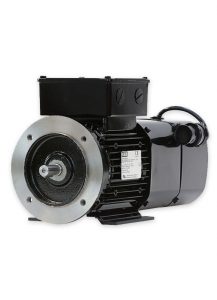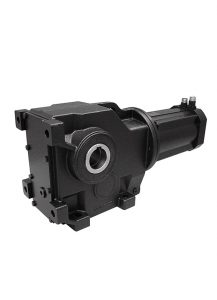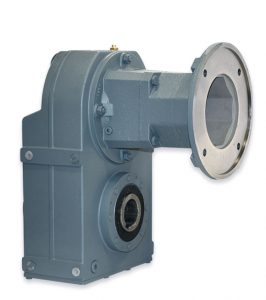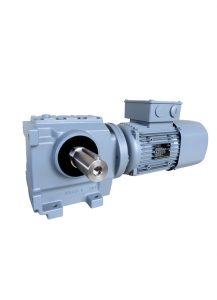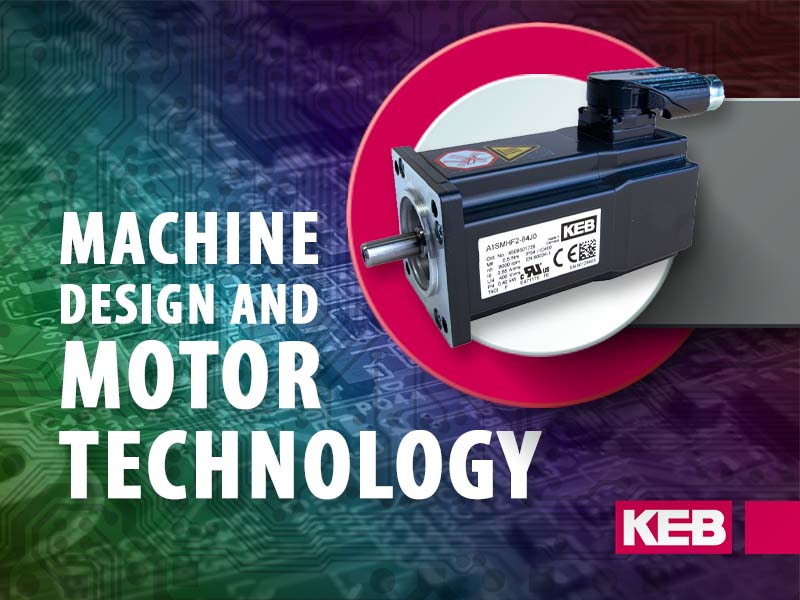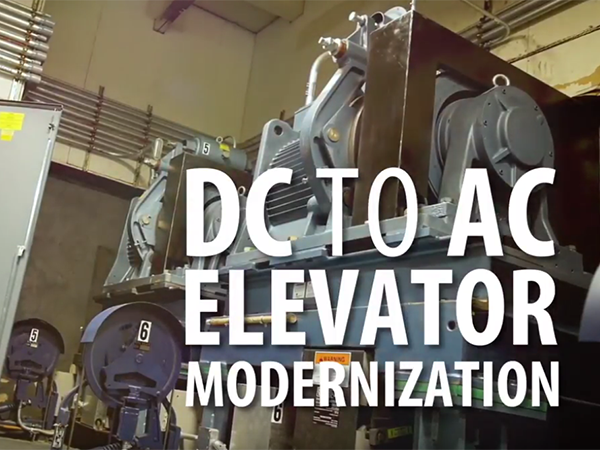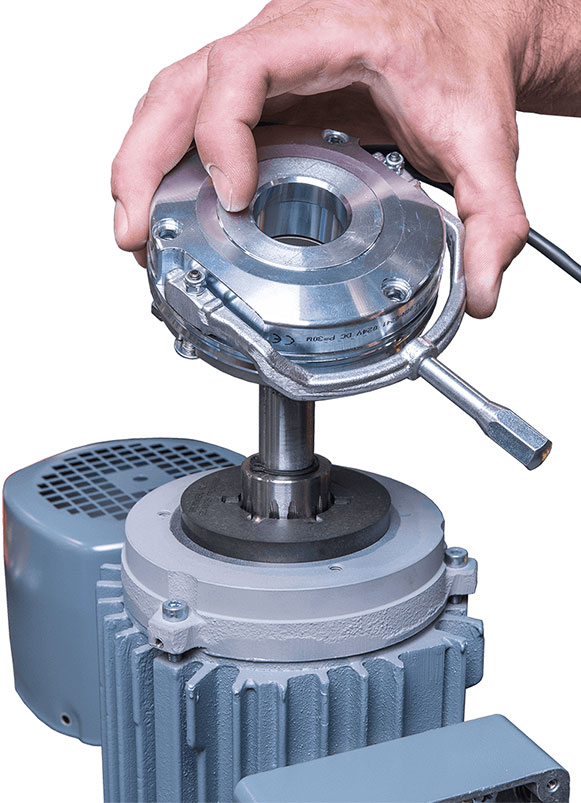Brushed Motors vs. Brushless Motors
Machine builders use various motor types to achieve different functions and efficiencies—and one of the most common distinctions is brushed vs. brushless motors.
Brushed DC motors were first invented in the 19th century. These motors use soft contacts called “brushes” to carry electric current. With time and innovation, new “brushless” DC motors were developed—followed by AC servo motors, which also feature a brushless design.
But why would machine builders favor brushless motors over their forebears? Let’s explore the benefits and drawbacks of each to find out.
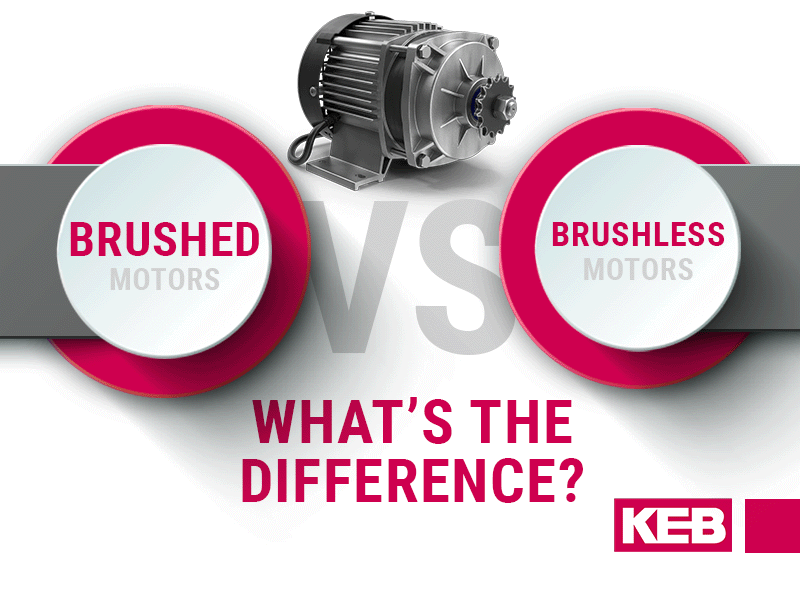
Pros and Cons
The debate between brushed and brushless motors centers on efficiency, durability, and cost. Brushed motors are known for their simplicity and lower initial cost, making them suitable for applications where the motor’s lifespan is not a critical factor. They provide reliable performance with a design that’s been refined over centuries.
However, the physical contact between the brushes and the commutator leads to wear and tear, requiring maintenance and eventual replacement of the brushes.
Brushless motors, by contrast, offer higher efficiency and longevity due to their lack of brushes. This design reduces maintenance needs and improves the motor’s lifespan.
Brushless motors have a higher initial cost, but the long-term benefits include reduced energy consumption and lower maintenance costs. Engineers increasingly prefer brushless motors in applications requiring precise control and high efficiency despite their higher upfront costs.
What are Brushed Motors?
Brushed motors comprise four primary parts: the armature, commutator, permanent magnets (or stator), and brushes. When connected to a power source, the opposite polarities of the magnets create a magnetic field, which in turn creates motion as current passes through the armature coils.
The brushes connect the rotating armature coils to the external power supply in this system. As the power supply sends more current to the armature coils, the strength of the electromagnetic field increases.
The “brushes” used in brushed motors are typically made from carbon or graphite. They can also be outfitted with dispersed copper to improve their conductivity. Over time, these brushes wear down and must be replaced through regular maintenance.
DC to AC Elevator Modernization
Advantages and Disadvantages of Brushed Motors
There’s a good reason why we’ve been using brushed motors for almost 200 years. These motors are straightforward, incorporating an armature, commutator, brushes, and permanent magnets.
This design facilitates easy control over motor speeds, making brushed motors a preferred choice for various applications where precision control is paramount.
What are the Advantages of a Brushed Motor?
- Cost-Effectiveness: Brushed motors are inexpensive to produce and purchase, making them accessible for various applications, from consumer electronics to industrial machinery.
- Simplicity and Reliability: Their simple construction ensures reliability and ease of manufacture and repair. This simplicity extends to their control mechanisms, allowing straightforward speed adjustments and excellent low-speed torque.
- Ease of Control: The direct physical connection provided by the brushes allows for dependable control over the motor’s speed and torque, an essential feature for applications requiring precise motor regulation.
What are the Disadvantages of a Brushed Motor?
High maintenance and short lifespan across high-intensity applications are the key downsides of brushed motors. These weaknesses may have inspired the creation of brushless motors in the early 1960s.
- Maintenance Requirements: The brushes and commutator experience wear and tear with use, requiring regular maintenance, replacement, and cleaning to prevent system failure and unplanned downtime.
- Reduced Efficiency and Lifespan: The friction between the brushes and the commutator generates heat and electrical noise, leading to energy loss and potentially shorter motor lifespan, especially in high-intensity applications.
- Environmental Impact: As the brushes wear down, they produce carbon dust, contaminating the operating environment and affecting nearby processes.
The inherent weaknesses in the design of brushed motors, such as their reliance on short-lived brushes and the need for ongoing maintenance, have spurred the development of brushless motors.
Despite these challenges, brushed motors continue to be utilized in various applications due to their advantages, particularly in scenarios where the cost and ease of use are critical factors.
What are Brushless Motors?
Brushless DC motors use a combination of permanent magnets, electromagnets, and a motor controller to convert DC to AC. This simplified design eliminates transferring power from outside the motor to the rotor within.
Brushless DC motors use sensors to detect the exact position of the rotor—which allows for more precise control to regulate speeds, improve torque, and conserve power.
The latest models of brushless motors include AC synchronous servo motors, which are ideal for today’s demanding industrial applications. These devices use servo controllers and feedback devices to help coordinate and adjust the motor action, which helps optimize torque, velocity, and overall performance.
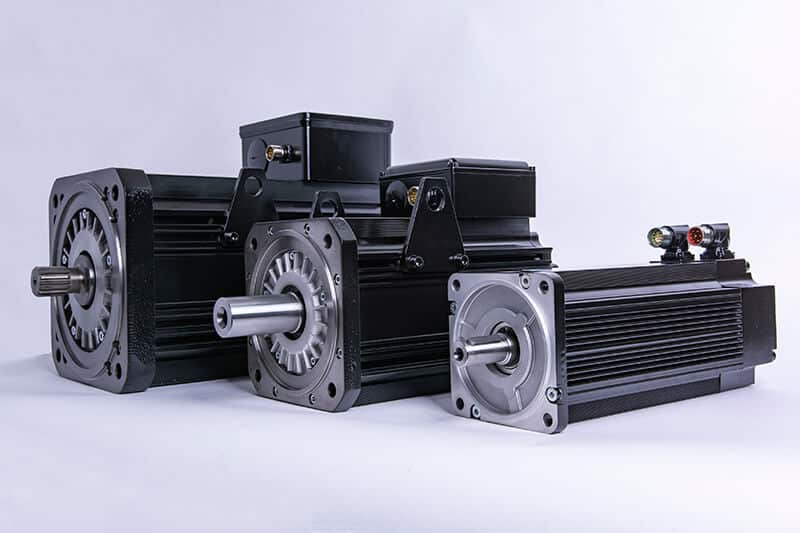
Advantages and Disadvantages of Brushless Motors
Brushless motors, like KEB’s DL4 Servo Motors, are a significant evolution in motor technology that bring forth a blend of efficiency, performance, and longevity not seen in their brushed counterparts.
Advantages of Brushless Motors
Brushless motors represent a leap forward in motor technology, offering many benefits over their brushed counterparts. These advantages stem from their innovative design, which leverages electronic controls and permanent magnets to enhance performance and efficiency.
- Higher Efficiency and Performance: With electronic controls and sensors, brushless motors can precisely manage the current flowing to the motor, significantly enhancing efficiency. This precise control improves the motor’s overall performance, from shaft performance to torque, making brushless motors superior in efficiency and power output compared to brushed motors.
- Reduced Maintenance: Brushless motors require less maintenance simply because they have no brushes to wear down and replace. This reduction in maintenance needs not only saves time but also contributes to the cost-effectiveness of brushless motors over their operational life.
- Compact and Powerful: Brushless motors deliver substantial power despite their smaller size. This compact power is particularly beneficial in applications where space is at a premium, but high performance is essential.
- Versatility and Customization: Brushless servo motors are known for their lightweight design and substantial torque output, rivaling the production of larger induction motors. They offer a balance of performance and efficiency, complemented by a long lifespan. Additionally, they can be customized with various feedback and brake options, enhancing their versatility across different applications.
Do Brushless Motors Last Longer?
Yes, brushless motors typically have a longer lifespan compared to brushed motors. The absence of brushes eliminates the primary source of wear and tear in brushed motors.
Without the friction and heat generated by brushes, brushless motors operate more coolly and efficiently, which leads to less maintenance and a longer lifespan. This significant reduction in heat generation and the elimination of brush replacement further contribute to their extended longevity.
Disadvantages of Brushless Motors
- Upfront Cost: One of the primary challenges with brushless motors is their higher initial cost. The complexity of their parts and the processing power required for their operation make them more expensive upfront than brushed motors. However, their reduced maintenance needs and longer lifespan often offset this cost.
- Complexity in Design and Operation: The same electronic controls that afford brushless motors their efficiency and performance advantages also introduce complexity. This complexity can require more sophisticated programming and setup, potentially requiring a higher level of technical expertise for integration and troubleshooting.
Brushless motors represent a leap forward in motor technology, offering a compelling array of benefits that cater to the demands for more efficient, reliable, and powerful machinery.
While the initial investment may be higher, the long-term advantages of improved efficiency, reduced maintenance, and versatility make brushless motors a preferred choice for many modern applications.
KEB: Your Partner in Industrial Automation
If you have any questions about different motor types and choosing the right one for your application, please contact an application engineer today. We’re here to help!
Let's Work Together
Connect with us today to learn more about our industrial automation solutions—and how to commission them for your application.
